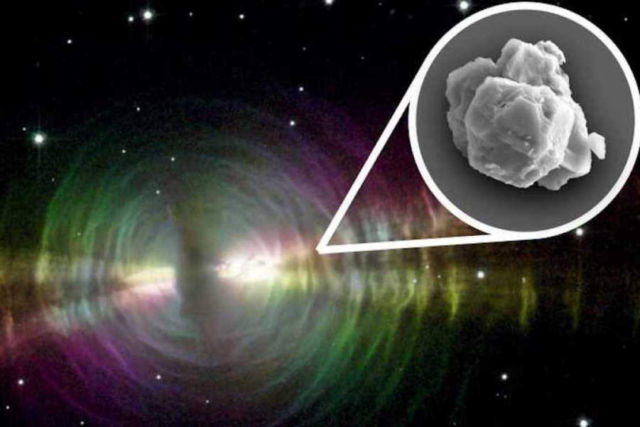Astrophysicists determined the age of stardust from a meteorite to be seven billion years, which is the oldest solid material ever found on Earth.
Stars have life cycles. They’re born when bits of dust and gas floating through space find each other and collapse in on each other and heat up. They burn for millions to billions of years, and then they die. When they die, they pitch the particles that formed in their winds out into space, and those bits of stardust eventually form new stars, along with new planets and moons and meteorites.
Above: Dust ejected from stars such as the Egg Nebula could be the source of presolar silicon carbide grains (inset) found in meteorites. (Image: NASA, JPL, STSci / Inset: Janaína N. Ávila)
And in a meteorite that fell fifty years ago in Australia, researchers from the Field Museum, the University of Chicago, ETH Zurich and other universities have now discovered stardust that formed 5 to 7 billion years ago–the oldest solid material ever found on Earth. The results of the study have just been published in the specialist journal PNAS.
The materials Philipp Heck and his colleagues examined are called presolar grains–minerals formed before the Sun was born. These bits of stardust became trapped in meteorites where they remained unchanged for billions of years, making them time capsules of the time before the solar system.
But presolar grains are hard to come by. They’re rare, found only in about five percent of meteorites that have fallen to Earth, and they’re tiny–a hundred of the biggest ones would fit on the period at the end of this sentence.
The Field Museum has the largest portion of the Murchison meteorite, a treasure trove of presolar grains that fell in Australia in 1969. Presolar grains for this study were isolated from the Murchison meteorite for this study about 30 years ago at the University of Chicago. They have now been examined more closely for their age and origin.
source ETH Zurich






Leave A Comment